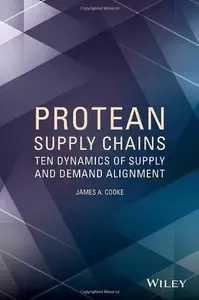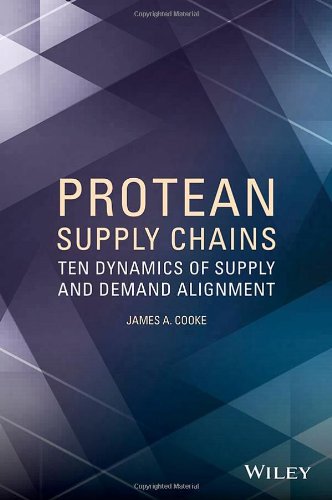Protean Supply Chains: Ten Dynamics of Supply and Demand Alignment by James A. Cooke
English | 2014 | ISBN: 1118759664 | ISBN-13: 9781118759660 | 256 pages | PDF | 1,3 MB
English | 2014 | ISBN: 1118759664 | ISBN-13: 9781118759660 | 256 pages | PDF | 1,3 MB
Features emerging trends that are shaping supply chain operations worldwide as well as impacting the global business landscape.
Beginning with the assertion that supply chains are an overlooked factor behind anemic economic growth, Protean Supply Chains: Ten Dynamics of Supply and Demand Alignment provides a comprehensive overview of the developments occurring in the field of supply chain management. A broad range of topics in facility location, inventory, strategic sourcing, and supply chain coordination are addressed in addition to coverage of major developments within the field. The author’s main position is that supply chains must be more than agile or flexible; rather, they must become protean and capable of changing shape in response to a volatile global business landscape.
The author, a well-known editor and researcher in the field, presents current real-world examples combined with insights into the impact of recent trends that are expected to affect the global business landscape over the next decade. Highlighting companies with leading-edge supply chains as examples, the book discusses methods to reduce spending, increase revenues, and achieve streamlined productivity in a changing economic climate. The book utilizes further examples from the growth of online retailing and automation in distribution centers, as well as the use of protean supply chains to gain competitive advantages internationally. In addition, the book features the following ten emerging trends, which are shaping supply chain operations worldwide:
• The rise of regional theatres of supply
• Global risk management through control towers
• Customer segmentation
• Real demand realization
• Omniichannel retailing challenges
• Demand swing alignment with production and distribution
• Customer of one service
• Sustainability challenges
• Collaboration vs. competition in the new economy
• Financial dynamism
The book is an ideal reference for professionals and practitioners in operations research, business/management science, applied mathematics, and industrial engineering as well as an appropriate supplement for undergraduate and graduate-level courses in supply chain management.



